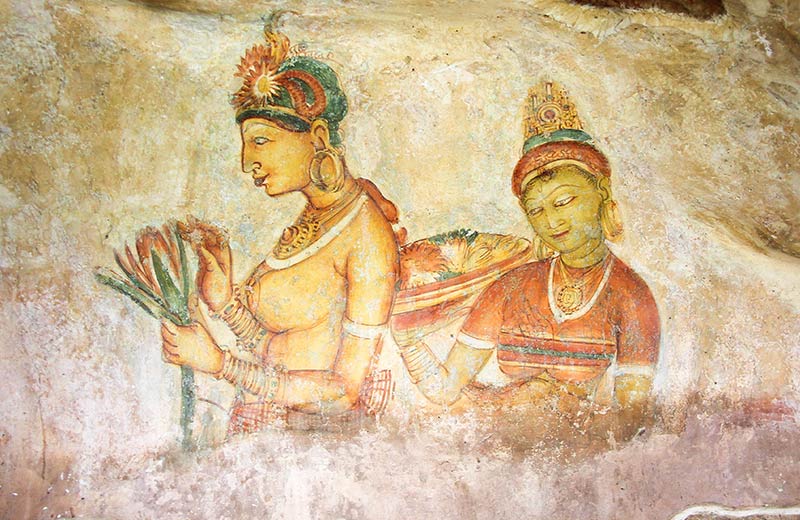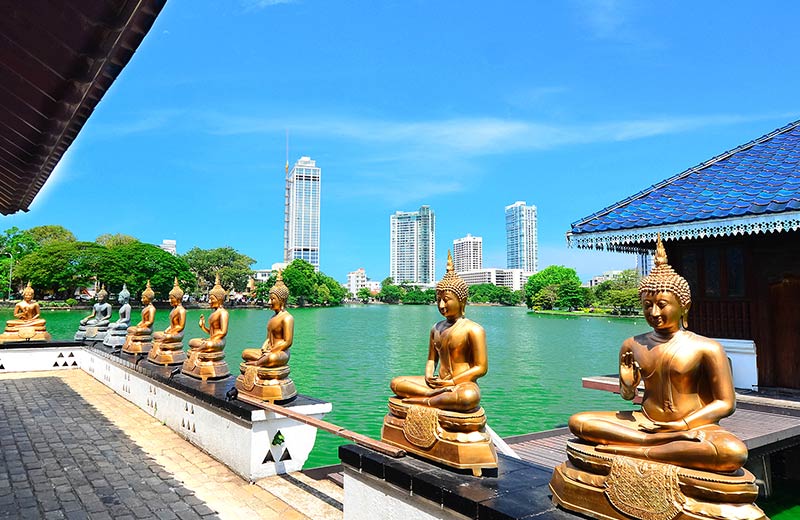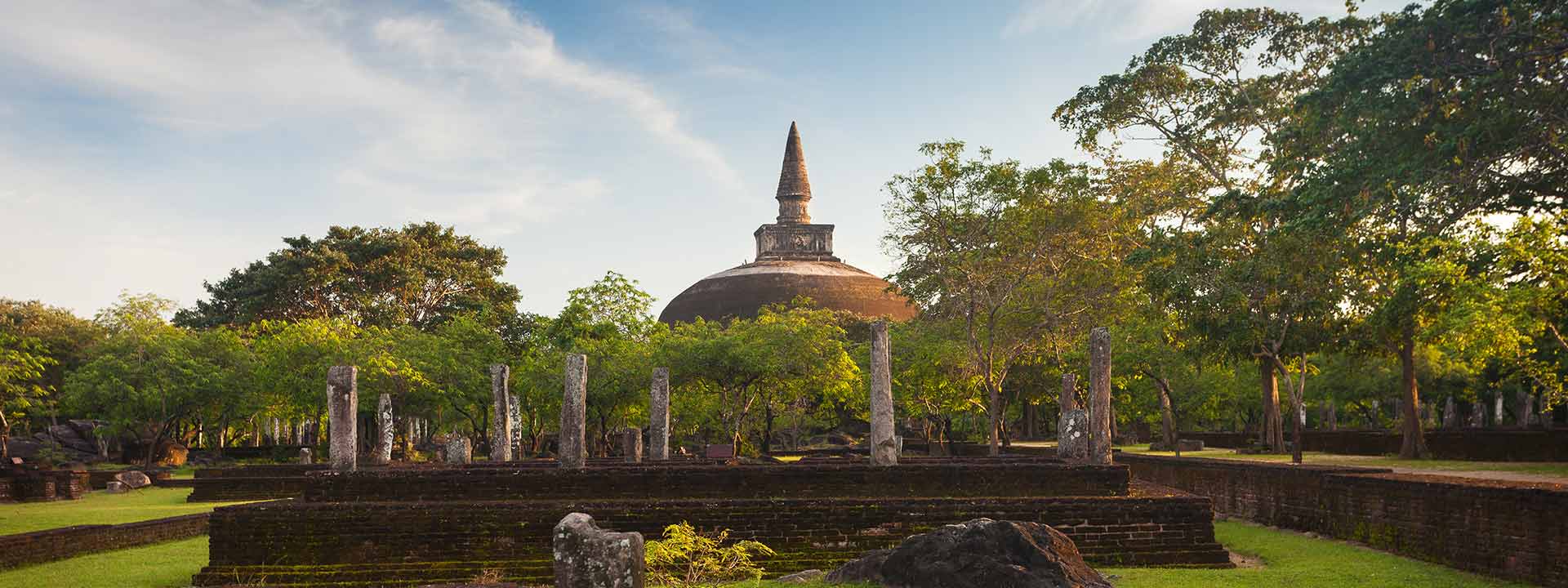The Kingdomthat Set the Course of the Island’s Faith
Anuradhapura, Sri Lanka’s first established kingdom, shaped the island’s narrative in many ways. The massive history of the kingdom is filled with significant political, cultural, social and spiritual events that influenced the trajectory of the nation.
Established in the year 377 BC by King Pandukabhaya, the Anuradhapura Kingdom has a history that spans about 1400 years. The island’s politics, culture, and society were heavily influenced by the events that transpired during this period. The most significant of these is probably the introduction of Buddhism to the country.
Sri Lanka was a land that had a sense of spiritualism much before Buddhism was established as the official religion of the island. There were a range of religious beliefs and practices that fulfilled the people’s need for spirituality, and each community seems to have followed its own path. The arrival of Buddhism in the country in the 3rd century BC during the reign of King Devanampiyatissa changed much of this. Buddhism soon began to influence every aspect of life, culture, politics and society, and to this day remains an integral part of the nation.
The Faith and Fate of a Nation
One full moon day, in the month of Poson (generally the month of June), King Tissa decided to go on a deer hunt. During his hunt, the king stumbled across a meditating monk on the Mihintale rock. The meditating monk, Venerable Mahinda, had been sent to Sri Lanka by Emperor Asoka of India. The Emperor had embraced the Dhamma of Lord Buddha and was keen to share it with King Tissa, whom he had already established a friendship with.
The Venerable Mahinda engaged in conversation with the king, primarily to ascertain whether he had the level of understanding needed to grasp the message he was about to hear. Satisfied with the king’s wisdom and understanding, the monk proceeded to share the Chullahattapadopana Sutta, containing the basic tenets and the four Noble Truths. This marked the introduction of Buddhism to Sri Lanka.
Deeply moved by what he heard, the king embraced the Dhamma of Lord Buddha and took steps to establish it in the Kingdom of Anuradhapura. One of the most significant events that followed his conversion was the establishment of the Buddha Sasana with the orientation of Prince Aritta, the nephew of the king. King Tissa was then renamed Devnampiyatissa, which translates to ‘beloved of the gods’.
In an act which emphasized the importance of the events that took place on the Mihintale rock, King Devanampiyatissa built the Mihintale Rock Temple, consisting of several caves that enabled devotees and clergy to meditate and practice the faith. Moreover, the Mahameghavana (The Royal Pleasure Gardens) were donated to build the monumental stupas that are an overt symbol of the significance of Buddhism in the country.
The Arrival of the Sacred Bo Tree
The king invited the Venerable Mahinda to the royal palace to partake in alms and share the Dhamma with the rest of the royal court. Greatly stirred by the monk’s preaching, Princess Anula, who was the wife of the king’s brother, attained ‘Sovan’ (the first step to Nibbana or Arahantship).
On the second day of Mahinda’s preaching, the princess along with 500 other ladies of the royal household attained ‘Sakrudagami’ (the second stage to Arahantship). The devoted princess then requested King Devanampiyatissa to seek the approval of the Venerable Mahinda to ordain her and the 500 ladies as nuns (pabbajja).
Although the king made this request, the monk replied,
“It is not allowed to us, O great king, to bestow pabbajja (ordination as nuns) on women. But in Pataliputta (city in India)) there lives a nun, my younger sister known by the name Sanghamitta. She who is ripe in experience, shall come hither, bringing with her the southern branch of the great Bodhi- tree of the king of Samanas, O king of men, and (bringing) also bhikkunis renowned (for holiness); to this end send a message to the king my father. When this Theri is here she will confer the pabbajja on these women “. (Mahavamsa)
Hearing this, King Devanampiyatissa dispatched Prince Aritta to seek out the Theri Sangamittha, who happened to be the daughter of Emperor Asoka. When Snagamitta heard the news, she asked her father for his blessing to travel to Lanka. In addition to giving his blessing, the Emperor convened a court with the Maha Sangha and they collectively agreed to send a sapling from the sacred bodhi tree (the fig tree under which the Lord Buddha attained enlightenment) with her. Once she arrived in the Kingdom of Anuradhapura, Theri Sangamittha gifted the sacred sapling to King Devanampiyatissa and ordained the princess and the 500 ladies of the court.
The king planted the sapling in a ceremonial manner at the Mahameghavana, and named it the Jaya Sri Maha Bodhi. This sacred tree still stands and continues to be venerated by devotees from the Buddhist world. Once the tree matured, the king ordered 40 of its saplings to be planted around the island. This was a symbolic step of the island accepting Buddhism as its official religion.
Although the glory days of the Kingdom of Anuradhapura are long gone, the many intriguing dagobas, well-engineered lakes and other historic ruins found around the city tell the story of a once strong, proud and prosperous kingdom that built the foundation for what the world now knows as the resplendent isle of Sri Lanka.






